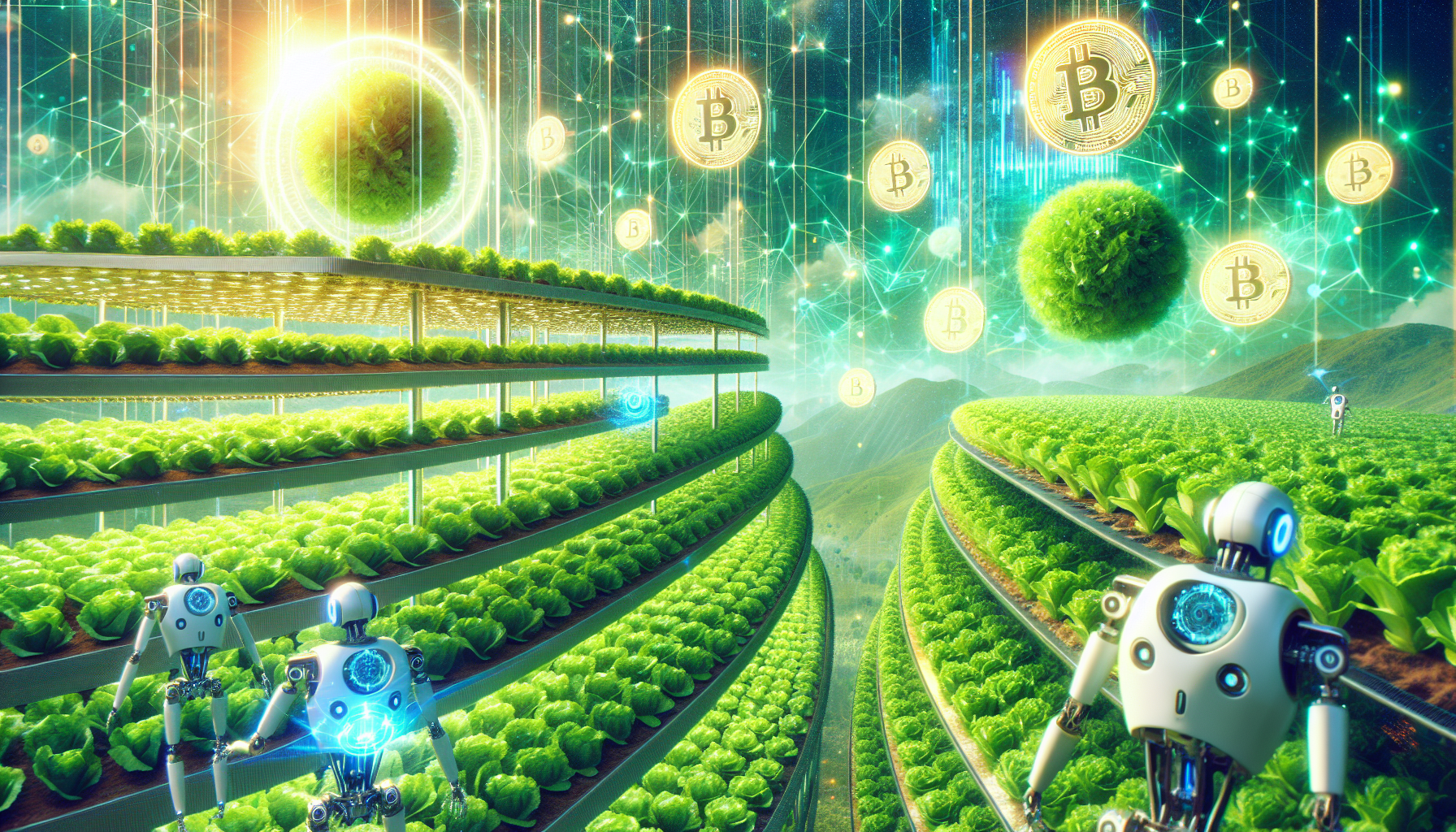
tl;dr
Peaq's blockchain-driven robo-farm combines AI, tokenization, and vertical farming to create a sustainable food system. By turning crop yields into NFTs, the project aims to democratize agriculture investment while achieving 10x resource efficiency.
**Peaq’s Tokenized Robo-Farm: A Glimpse into the Future of Sustainable Agriculture?**
At Korea Blockchain Week 2025, Peaq—a blockchain network focused on the “Machine Economy”—unveiled a bold experiment: the world’s first tokenized robo-farm. Developed in partnership with DualMint, a platform for digitizing real-world assets, and KanayaAI, a Hong Kong-based agritech firm, the project aims to merge blockchain, automation, and sustainable food production. The result? A vertical farm that doesn’t just grow crops—it generates yield, literally and figuratively.
**The Rise of Autonomous Farming**
Vertical farming, the practice of growing crops in stacked layers indoors, has long been touted as a solution for urban food scarcity. By using hydroponics, artificial lighting, and climate control, these farms can produce consistent yields with minimal land and water. But Peaq’s vision takes it further. The Hong Kong facility, powered by KanayaAI’s automated systems, promises 12 crop cycles annually—far surpassing traditional farms’ 3–4. It uses 10 times less land, 10 times less water, and zero pesticides, churning out lettuce, kale, and spinach for local subscribers.
Co-founder Leonard Dorlöchter called it “a farming machine that generates a 20% yield,” a figure that underscores the project’s efficiency. But the real innovation lies in how it’s funded.
**Tokenization Meets Agriculture**
Here’s where blockchain steps in. Peaq’s robo-farm turns its revenues into non-fungible tokens (NFTs) on its Layer-1 blockchain. These tokens represent shares of the farm’s cash flow, allowing investors to own a piece of a sustainable food system. DualMint, which specializes in tokenizing physical assets, is managing the sale, with an early access list already open.
This model isn’t just about farming—it’s about creating a new asset class. By linking farm profits directly to consumer demand, Peaq aims to prove that tokenized automation can deliver both environmental and financial returns. “The machine economy is here,” Dorlöchter declared, pointing to the convergence of AI, robotics, and blockchain.
**Challenges and Opportunities**
Yet, the path isn’t without hurdles. Vertical farms require significant capital for energy-intensive systems, and scaling such projects demands technical expertise. Critics warn that high costs could consolidate food production in the hands of well-funded entities. But Peaq’s approach—using tokenization to democratize access—could disrupt that dynamic.
The project also aligns with broader trends in agricultural robotics. From AI-driven weeding robots in Arizona to modular systems shipping greens to markets, automation is reshaping farming. Peaq’s robo-farm, set to launch in Q4 2025, could be a blueprint for how blockchain and AI collaborate to tackle global food security.
**A New Era, or Just a Gimmick?**
For now, the Hong Kong farm remains a proof of concept. But its success could signal a shift: where once farming was tied to land, now it’s tied to code. As Dorlöchter put it, “We’ve entered the most disruptive time humanity has seen.” Whether this robo-farm becomes a cornerstone of the Machine Economy or a fleeting experiment, one thing is clear: the future of food is being coded.